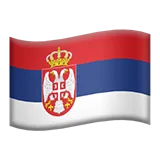Our new review of the most popular product management frameworks tells about the RICE method. As always, these articles are based on the mentoring experience of Alexey Kulakov, JetStyle’s co-founder and CEO.
We suggest viewing a business as a system with flow delivery. The flow may be measured in the number of deals, clients, holdings, iPhones, etc. and, of course, money.
RICE stands for Reach, Impact, Confidence, and Effort. This technique prioritizes activities that bring the most profit per resource spent. RICE suggests: “let’s find your business’s low-hanging fruit and harvest it.”

The ‘profit’ here is your value: money, clients, deals. ‘Resources spent’ refers to your most deficit resource. If your most deficit resource is team lead work, then it makes sense to measure resources in hours of a team lead's work. If it’s time, measure everything in working hours. If you’re short on money and it’s your biggest deficit – then measure the resource in euros, dollars, etc.
To implement RICE, you need to come up with a series of parameters and weigh them. In other words, RICE allows you to prioritize hypotheses and visualize your intuition. It’s a pretty fast and rough method of prioritization.
Example
A step-by-step illustration of how RICE works.
0. Choose the flow you’re going to optimize.
For instance, you want to optimize the flow of leads. It’s a very general idea and it does not specify what exactly you’re going to do. Options are the following:
- We need more leads from new clients who don’t know us yet (optimizing requests made by new clients).
- We need a better lead qualification process that would facilitate the work of the sales department (decreasing the amount of non-target demos per 1 sales manager).
- We need sales tools that will increase conversion to transactions (boosting the conversion from demos to sales).
- We need more upsales (increasing the amount of sales per a regular customer).
- We need more website payments (increasing the net cash flow from the website)
And so on. All these tasks are similar, but they have different priorities. You also need different sets of digital tools to implement them. To illustrate how RICE works, we’ll take the most popular task: we’ll optimize the requests made by new clients.
1. Choose the activities you’re prioritizing
How do we boost website traffic? What are our hypotheses for executing this? In real product development, there can be dozens of such hypotheses. We’ll go with these:
- Add more case studies on the website and make sure they attract more traffic.
- Purchase more ad traffic oriented at our target audience.
- Launch a referral program so that our partners sell related services.
- Add a lead magnet to increase conversion from visit to a request.
- Change the feedback form to increase conversion from visit to a request.
2. Measure the RICE parameters
The task is to measure the parameters of RICE. They are: Reach, Impact, Confidence, Effort. How do we estimate them? It’s hard to find real-life data, so the best idea is to use an approximate point system, eliminate the most ineffective ideas and work with the rest of them more thoroughly.
Before you implement RICE, you need to agree on what all points on the scorecard mean for you. At least, the end and the middle ones.
We’ll estimate the ideas on a scale from 1 to 5.
Reach: 5 points is the system’s biggest flow; in our example it will be the number of target leads. Let’s say, the richest point of contact in your funnel is 10K of Youtube reach. 3 points in RICE’s reach will be 1K.
If we say that the Impact is 5 points, it means that the flow of clients will increase greatly if we put effort into it. 1 point is zero or negative impact.
Confidence shows how sure we are that our activity will be successful; if it’s 5 points, it means we’re pretty confident as we have already done this. If it’s 1 point, we are not sure because we don’t know.
With Effort, the lower the score – the better: 5 is the biggest amount of resources we’re ready to spend. 1 is when we need a minimal investment to execute the initiative.
All the points are relative. They are mostly based on your intuition; your intuition influences the results a lot.

3. Weigh the parameters for each hypothesis
We’ll illustrate this step on the Reach parameter.
Add more case studies on the website. Your case studies are not necessarily a part of your marketing efforts, so probably some of your potential customers will not even see them. This hypothesis cannot get a 5 for this parameter. However, case studies usually boost search traffic – so it’s a solid 3. In our example, we think that SEO search traffic will bring at least 1K people.
Purchase more ad traffic. It’ll definitely help us interact with more leads. Will all of them be target ones? 4 points for this hypothesis.
Launch a referral program. First, we should check the previous data about implementation of referral programs. If there is none, we cannot be sure that it’s going to attract new clients. That’s 2 points.
Launch a lead magnet to increase conversion from visit to request. This activity is located in a different part of the funnel, and it will not attract as much audience as the previous ones. However, it’s a pretty cheap initiative, and if executed well, it will attract potential clients. 4 points for this hypothesis.
Change the feedback form. It will reach even less people than the lead magnet. This is also a low-effort initiative, and we don’t expect it to be extremely effective for our goal – so that’s 3 points.
You get the idea. Then, you evaluate the rest of the parameters the same way. We call it ‘scram poker’: we talked and collected the opinions of other team members. It's not mathematics – we just visualize our intuition.
It’s obvious that RICE is a very error-prone method of prioritization. To make the most out of it, we agree to describe some of the hypotheses in a more detailed manner. For example, it’s a good idea to collect some analytic data, conduct customer research, and get benchmarking data. It will prove useful in the future, when you create new hypotheses about your product development.
RICE is just a method for you to find the low-hanging fruit. In the end, it’s you who makes the decision, not a table with scores.
4. Apply the scoring model
R x I x C / E – that’s the formula of RICE; insert your numbers, do the math and start with the hypotheses with the maximum points.
What’s Wrong with RICE
RICE is too rough. You can use it only if you can be honest with yourself. The numbers you write down do not reflect reality. They visualize what you think about reality.
It fails to prioritize expensive tasks. RICE will help you identify the low-hanging fruit; you won’t build a product strategy with it. If you use RICE only, you’ll grow bushes instead of pines (read what we mean with this tree metaphor).
It leads to local optimization. You may find the low hanging fruit in different parts of the system, and they will motivate you to put effort into all of them.
What Tasks is RICE Good for?
- RICE will help you check your early hypothesis when you don’t understand your market yet.
- It will drive product insights; you’ll use them to create the ‘trunk’ (=main flow of value delivery) of your business. If you want to grow the trunk, consider implementing TOC.
- RICE is not a strategic tool. It will identify impactful and low-effort initiatives. This prioritization technique is perfect for support teams that take care of the system maintenance.
***
Do you want to check if RICE is an adequate prioritization technique for your business goals? We provide consulting services for startups and product development teams; read about our approach here.








